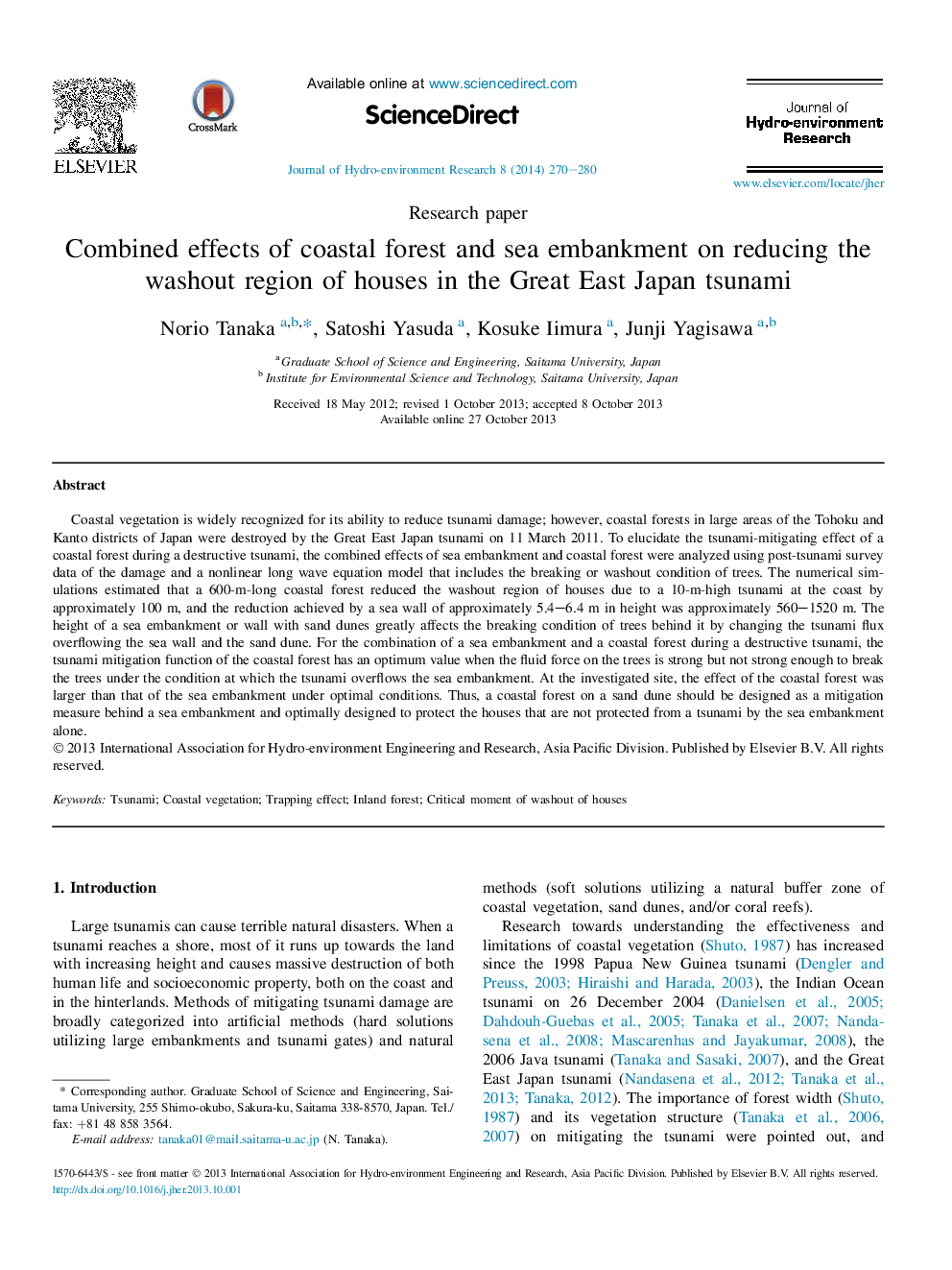| کد مقاله | کد نشریه | سال انتشار | مقاله انگلیسی | نسخه تمام متن |
|---|---|---|---|---|
| 4493675 | 1318661 | 2014 | 11 صفحه PDF | دانلود رایگان |
• The combined effects of sea embankment and coastal forest were analyzed using tsunami survey data.
• Effects of coastal forest and sea embankment on reducing washout region of houses were analyzed.
• Effect of sand dunes in reducing the tsunami severity was compared with that by coastal forest.
• Optimal conditions for tsunami mitigating function of coastal forest behind a sea embankment.
Coastal vegetation is widely recognized for its ability to reduce tsunami damage; however, coastal forests in large areas of the Tohoku and Kanto districts of Japan were destroyed by the Great East Japan tsunami on 11 March 2011. To elucidate the tsunami-mitigating effect of a coastal forest during a destructive tsunami, the combined effects of sea embankment and coastal forest were analyzed using post-tsunami survey data of the damage and a nonlinear long wave equation model that includes the breaking or washout condition of trees. The numerical simulations estimated that a 600-m-long coastal forest reduced the washout region of houses due to a 10-m-high tsunami at the coast by approximately 100 m, and the reduction achieved by a sea wall of approximately 5.4–6.4 m in height was approximately 560–1520 m. The height of a sea embankment or wall with sand dunes greatly affects the breaking condition of trees behind it by changing the tsunami flux overflowing the sea wall and the sand dune. For the combination of a sea embankment and a coastal forest during a destructive tsunami, the tsunami mitigation function of the coastal forest has an optimum value when the fluid force on the trees is strong but not strong enough to break the trees under the condition at which the tsunami overflows the sea embankment. At the investigated site, the effect of the coastal forest was larger than that of the sea embankment under optimal conditions. Thus, a coastal forest on a sand dune should be designed as a mitigation measure behind a sea embankment and optimally designed to protect the houses that are not protected from a tsunami by the sea embankment alone.
Journal: Journal of Hydro-environment Research - Volume 8, Issue 3, August 2014, Pages 270–280
